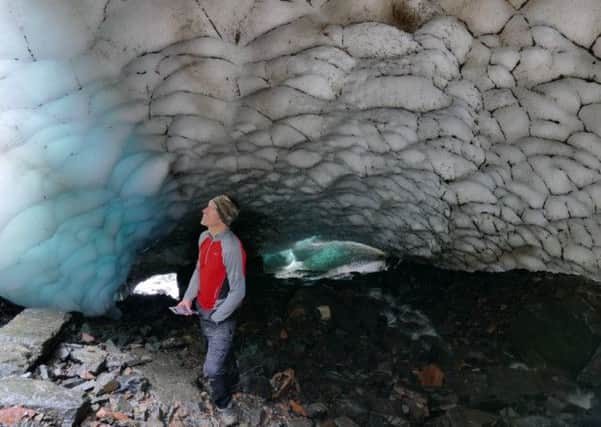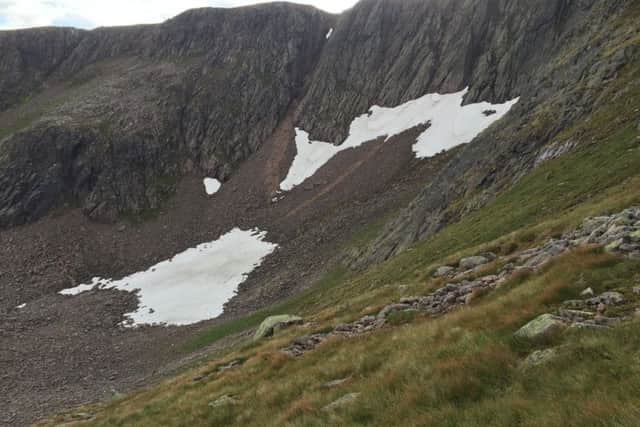The Scottish glen where the snow never melts


Local records suggest the drifts on Garbh Choire Mor are so durable they have completely melted just five times since the 1700s.
The land, known as a corrie, is found on the slopes of Braeriach - the third highest mountain in the UK, and part of the Cairngorms range.
Advertisement
Hide AdAdvertisement
Hide AdScotland has been entirely free of snow for brief periods in 1933, 1959, 1996, 2003 and 2006.


“Snow in Garbh Choire Mor can easily reach depths of 50ft, and probably 75ft in exceptional years,” said Iain Cameron, whose findings are published by the Royal Meteorological Society.
“People underestimate just how much snow falls on Scotland’s mountains during winter.
“The snow on Garbh Choire Mor has been talked about in mountaineering circles for a long time. It was written about more than 100 years ago. I’ve known about it since I was a teenager, through the writings of people like Adam Watson, who was born in the 1930s and has been visiting regularly since the ‘40s.
“The snow disappeared for the first time in living memory in 1933. It was considered so remarkable a letter to The Times was published calling for a commemoration as it was considered unlikely ever to happen again.”
A complex range of factors cause the snow in Garbh Choire Mor to be so durable, the most important of which is the amount that falls in the region each winter.
“The more snow there is the longer it takes to melt,” Cameron added. “It sounds simple, but it is the most important factor. The other is conditions over summer. The ambient air temperature makes a huge difference, as does the location of the snow - a lot of the snow lies on north-east facing corries. These locations do get some summer sun, but not much due to the location of the cliffs.”
Three of the snow-free years on Garbh Choire Mor have come in the last two decades, but Cameron said he could not definitively say that climate change was the cause.
Advertisement
Hide AdAdvertisement
Hide Ad“It is not my area of expertise,” he said. “Myself and others who record the snow levels are amateurs. We do this because we find it interesting. We report the data and leave it to others to interpret it.
“If - and it is a big if - climate change was responsible, it doesn’t mean we will see an end to high snow levels here. If the planet is warming, there can be local variations.”
Cameron, from Stirling, is a manager at an aerospace company. Like his fellow recorders, he travels to the hills and glens in his own time and pays for his own travel. “There’s a Greek word, chionophile, that describes animals that thrive in cold conditions,” he said.
He admits it is a hobby that others may consider strange, but there is no doubting the health benefits, with a typical trip involving a minimum of four hours of hiking.
“Some of the places we visit would challenge your average hillwalker. Some of the terrain is quite tricky to reach. These snow patches don’t lie in convenient places,” he said.